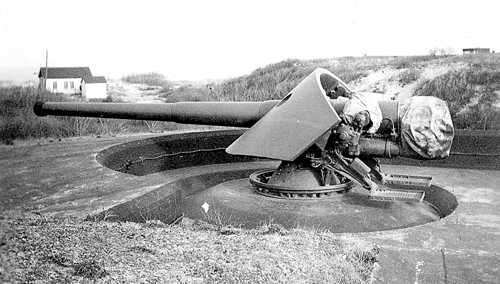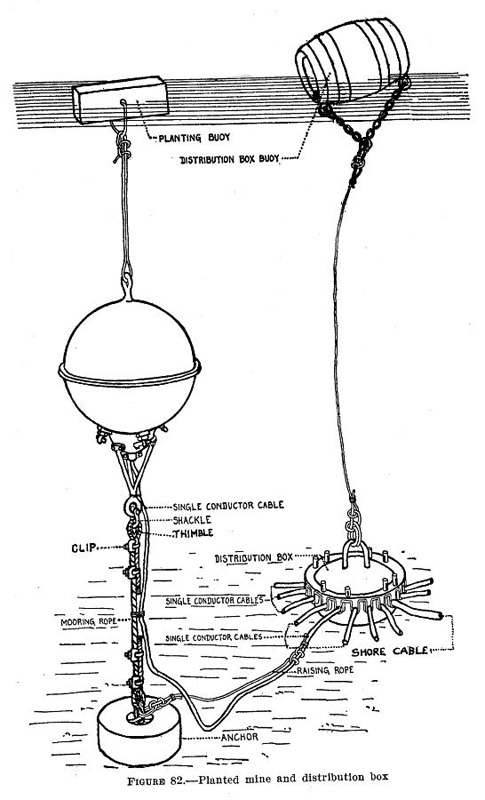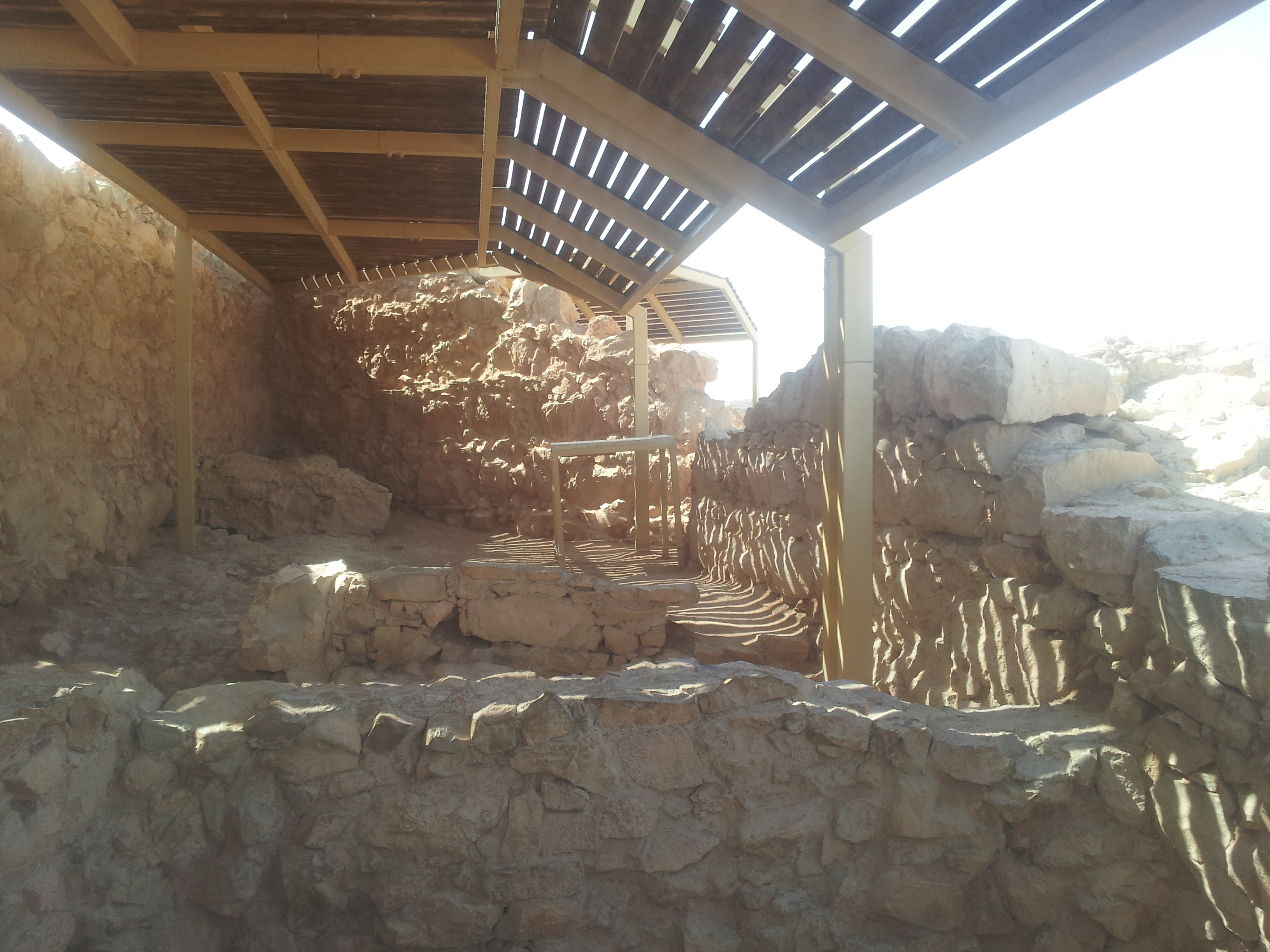|
Cape Charles AFS
Cape Charles Air Force Station is a closed United States Air Force General Surveillance Radar station. It is located south of Townsend, Virginia. It was closed in 1981. From 1941 to 1948 it was Fort John Custis of the United States Army Coast Artillery Corps. Since 1984 the site has been in the Eastern Shore of Virginia National Wildlife Refuge. For this article's purposes the term "Fort John Custis" includes the nearby Fisherman Island. History World War I After the American entry into World War I in April 1917, two "emergency batteries" were deployed on Fisherman Island. Two M1900 guns came from Battery Ritchie at Fort DuPont, Delaware; the source of the other pair of guns is less clear, and some references list them as M1900 guns. With the war over, both batteries were dismantled in 1919. All types of Coast Artillery 5-inch guns were removed from service by 1920; the fate of the possible 6-inch guns is unclear. World War II coastal defense installation The mili ... [...More Info...] [...Related Items...] OR: [Wikipedia] [Google] [Baidu] |
Air Defense Command
Aerospace Defense Command was a major command (military formation), command of the United States Air Force, responsible for air defense of the continental United States. It was activated in 1968 and disbanded in 1980. Its predecessor, Air Defense Command, was established in 1946, briefly inactivated in 1950, reactivated in 1951, and then redesignated ''Aerospace'' rather than ''Air'' in 1968. Its mission was to provide air defense of the Continental United States (CONUS). It directly controlled all active measures, and was tasked to coordinate all passive means of air defense. Air defense during World War II Continental United States air defense forces during World War II were initially under the command of the four air districts – Northeast Air District, Northwest Air District, Southeast Air District, and Southwest Air District. The air districts were established on 16 January 1941, before the Pearl Harbor attack. The four air districts also handled USAAF combat training ... [...More Info...] [...Related Items...] OR: [Wikipedia] [Google] [Baidu] |
6-inch Gun M1900
The 6-inch gun M1897 (152 mm) and its variants the M1900, M1903, M1905, M1908, and M1 (a.k.a. T2) were coastal artillery pieces installed to defend major American seaports between 1897 and 1945. For most of their history they were operated by the United States Army Coast Artillery Corps. They were installed on disappearing carriages or pedestal (a.k.a. barbette) mountings, and during World War II many were remounted on shielded barbette carriages. Most of the weapons not in the Philippines were scrapped within a few years after World War II. History In 1885, William C. Endicott, President Grover Cleveland's Secretary of War, was tasked with creating the Board of Fortifications to review seacoast defenses. The findings of the board illustrated a grim picture of existing defenses in its 1886 report and recommended a massive $127 million construction program of breech-loading cannons, mortars, floating batteries, and submarine mines for some 29 locations on the US coastl ... [...More Info...] [...Related Items...] OR: [Wikipedia] [Google] [Baidu] |
Submarine Mines In United States Harbor Defense
The modern era of defending American harbors with controlled mines or Naval mine, submarine mines (originally referred to as "torpedoes") began in the post-Civil War period, and was a major part of US Seacoast defense in the United States, harbor defenses from circa 1900 to 1947. Brief history In 1866, the United States Army Corps of Engineers established the U.S. Army Engineer School, Engineer School of Application at Fort Totten (Queens), Willets Point, New York. The first commander of this school, Major Henry Larcom Abbot, was almost single-handedly responsible for designing and supervising the program of research and development that defined the strategy and tactics for the mine defense of American harbors. Abbot experimented with underwater explosives, fuzes, cabling, and electrical equipment for over a decade before publishing the first manuals on the use of mines in coast defense in 1876–77. At least one experimental controlled minefield was emplaced at this time, at Fort ... [...More Info...] [...Related Items...] OR: [Wikipedia] [Google] [Baidu] |
Panama Mount
The Panama Mount is a form of gun mount for fixed coastal artillery developed by the U.S. Army in Panama during the 1920s. Widely used during the buildup to and during World War II by the United States military, it was typically equipped with a rifled gun. The term Panama mount is often incorrectly used to describe other gun mounts with similar layouts and/or purpose. Description The Panama mount was constructed as needed to provide 180, 270, and 360 degrees of traverse, with its gun mounted on a central diameter concrete pier surrounded by a full or partial approximately concrete-embedded steel rail. Concrete beams connected the two for alignment and stability. Originally the guns were traversed by pivoting their trailing arms around the steel ring with prybars. Later installations added a geared steel ring inside the rail. The principle weapon employed was the Canon de 155mm GPF, the primary gun of the United States Army Coast Artillery Corps' tractor-drawn mobi ... [...More Info...] [...Related Items...] OR: [Wikipedia] [Google] [Baidu] |
155 Mm Gun M1918
The Canon de 155 Grande Puissance Filloux (GPF) modèle 1917 was a WWI-era French-designed 155 mm gun used by the French Army and the United States Army during the first half of the 20th century in towed and self-propelled mountings. History The gun was designed during the First World War by Colonel Louis Filloux to meet an urgent need for modern heavy artillery and became the standard heavy field gun of the French Army from 1917 until the Second World War. It was also adopted by the United States as the M1917 and a close derivative of it was made in and used by the US as the M1918 through the Second World War. The design adopted the split trail invented by French Colonel Deport in the early 1910s (see Cannone da 75/27 modello 11), and unlike the previous pieces, which had their carriages riveted from machined and/or pressed steel parts, utilized very large steel castings. The gun was also manufactured in the United States from 1917, after the US switched to metric ... [...More Info...] [...Related Items...] OR: [Wikipedia] [Google] [Baidu] |
Attack On Pearl Harbor
The attack on Pearl HarborAlso known as the Battle of Pearl Harbor was a surprise military strike by the Empire of Japan on the United States Pacific Fleet at Naval Station Pearl Harbor, its naval base at Pearl Harbor on Oahu, Territory of Hawaii, Hawaii, on December 7, 1941. At the time, the U.S. was a Neutral powers during World War II, neutral country in World War II. The air raid on Pearl Harbor, which was launched from Aircraft carrier, aircraft carriers, resulted in the U.S. entering the war on the side of the Allies of World War II, Allies on the day following the attack. The Imperial General Headquarters, Japanese military leadership referred to the attack as the Hawaii Operation and Operation AI, and as Operation Z during its planning. The attack on Pearl Harbor was preceded by months of negotiations between the U.S. and Japan over the future of the Pacific Ocean, Pacific. Japanese demands included that the U.S. ABCD line, end its sanctions against Japan, cease aidi ... [...More Info...] [...Related Items...] OR: [Wikipedia] [Google] [Baidu] |
16"/50 Caliber Mark 2 Gun
The 16"/50 caliber Mark 2 gun and the near-identical Mark 3 were guns originally designed and built for the United States Navy as the main armament for the South Dakota-class battleship (1920), ''South Dakota''-class battleships and s. The successors to the 16"/45 caliber gun, 16"/45 caliber gun Mark I gun, they were at the time among the heaviest guns built for use as naval artillery. As part of the Washington Naval Treaty of 1922, both of these ship classes were cancelled part way through construction, rendering surplus about 70 examples of the 16-inch/50 which had already been built. Twenty were released to the United States Army, between 1922 and 1924, for use by the United States Army Coast Artillery Corps, Coast Artillery Corps, the rest were kept in storage for future naval use. Only ten of the twenty available guns were deployed (in five two-gun batteries) prior to 1940.Berhow, p. 61 When the design of the began in 1938, it was initially assumed these ships would use th ... [...More Info...] [...Related Items...] OR: [Wikipedia] [Google] [Baidu] |
Casemate
A casemate is a fortified gun emplacement or armoured structure from which guns are fired, in a fortification, warship, or armoured fighting vehicle.Webster's New Collegiate Dictionary When referring to antiquity, the term "casemate wall" means a double city wall with the space between the walls separated into chambers, which could be filled up to better withstand battering rams in case of siege (see .) In its original early modern meaning, the term referred to a vaulted chamber in a fort, which may have been used for storage, accommodation, or artillery which could fire through an opening or embrasure. Although the outward faces of brick or masonry casemates proved vulnerable to advances in artillery performance, the invention of reinforced concrete allowed newer designs to be produced well into the 20th century. With the introduction of ironclad warships, the definition was widened to include a protected space for guns in a ship, either within the hull or in the low ... [...More Info...] [...Related Items...] OR: [Wikipedia] [Google] [Baidu] |
Martha Washington
Martha Dandridge Custis Washington (June 2, 1731 Old Style, O.S. – May 22, 1802) was the wife of George Washington, who was the first president of the United States. Although the title was not coined until after her death, she served as the inaugural first lady of the United States, defining the role of the president's wife and setting many precedents that future first ladies observed. During her tenure, she was referred to as "Lady Washington". Washington is consistently ranked in the upper half of first ladies by historians. Martha Dandridge married Daniel Parke Custis on May 15, 1750, and the couple had four children, only one of whom survived to adulthood. She was widowed in 1757 at the age of 26, inheriting a large estate. She was remarried to George Washington in 1759, moving to his plantation, Mount Vernon. Her youngest daughter died of epilepsy in 1773, and the Washingtons were unable to conceive any children of their own. Washington became a symbol of the American R ... [...More Info...] [...Related Items...] OR: [Wikipedia] [Google] [Baidu] |
John Parke Custis
John Parke Custis (November 27, 1754 – November 5, 1781) was an American planter class, planter and politician. Custis was a son of Martha Washington, Martha Dandridge Custis (later Washington) and Daniel Parke Custis, and later, the stepson of George Washington. Sara M. Bearrs, "John Parke Custis 1754-1781" in ''Dictionary of Virginia Biography'' Vol.3 (Richmond: Library of Virginia, 2006) pp. 639–640. Early life and education The only son to survive childhood of Daniel Parke Custis, a wealthy planter with nearly three hundred slaves and thousands of acres of land in five Virginia counties, and the former Martha Washington, Martha Dandridge, he was most likely born at White House (plantation), White House, his parents' plantation on the Pamunkey River in New Kent County, Virginia. To his family, he was known as "Jacky" as a boy, then "Jack", especially after attaining his inheritance. Following his father's death in 1757, under Virginia's laws concerning intestacy (dying ... [...More Info...] [...Related Items...] OR: [Wikipedia] [Google] [Baidu] |
Newport News, Virginia
Newport News () is an Independent city (United States), independent city in southeastern Virginia, United States. At the 2020 United States census, 2020 census, the population was 186,247. Located in the Hampton Roads region, it is the List of cities in Virginia, fifth-most populous city in Virginia and List of United States cities by population, 140th-most populous city in the United States. The city is at the southeastern end of the Virginia Peninsula, on the northern shore of the James River (Virginia), James River to the river's mouth on the harbor of Hampton Roads. Most of the area now known as Newport News was once a part of Warwick County, Virginia, Warwick County, one of the eight original shires of Virginia formed in the British Colony of Virginia by order of Charles I of England in 1634. Newport News was a rural area of plantations and a small fishing village until after the American Civil War. In 1881, fifteen years of rapid development began under the leadership of Co ... [...More Info...] [...Related Items...] OR: [Wikipedia] [Google] [Baidu] |
Fort Eustis
Fort Eustis is a United States Army installation in Newport News, Virginia. In 2010, it was combined with nearby Langley Air Force Base to form Joint Base Langley–Eustis. The post is the home to the United States Army Training and Doctrine Command, the U.S. Army Aviation Logistics School, the 7th Transportation Brigade, anJoint Task Force – Civil Support Other significant tenants include the Army Center for Initial Military Training (USACIMT), Army Training Support Center (ATSC), the Army Aviation Applied Technology Directorate (AATD) and Enterprise Multimedia Center (EMC). At Fort Eustis and Fort Story, officers and enlisted soldiers receive education and on-the-job training in all modes of transportation, aviation maintenance, logistics and deployment doctrine and research. The headquarters of the Army Transportation Corps was at Fort Eustis until 2010 when it moved to Fort Lee, now Fort Gregg-Adams. In accordance with the 2005 BRAC legislation, the administra ... [...More Info...] [...Related Items...] OR: [Wikipedia] [Google] [Baidu] |






